HOME | ABOUT US | MEDIA KIT | CONTACT US | INQUIRE
HOME | ABOUT US | MEDIA KIT | CONTACT US | INQUIRE
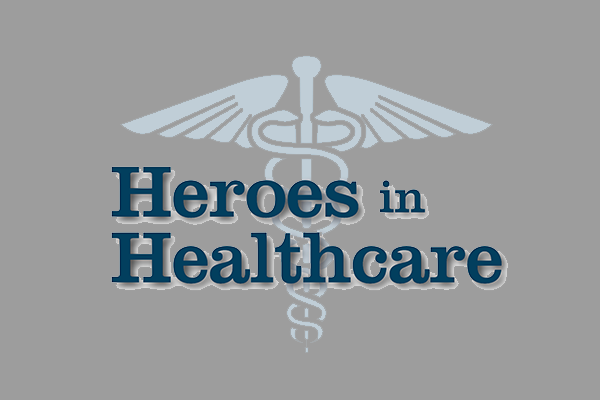
The standard definition of a hero is someone admired for demonstrating courage. But there’s more to the definition: It also applies to someone admired for noble qualities. So it’s no misuse of the term to bestow that title on the 21 individuals you will meet in this, our 19th installment of Heroes in Healthcare.
For a third straight year, that designation carries a special meaning. Unless you’re really bad at car repair, plumbing or retail sales, your customer’s life generally isn’t on the line. Health-care workers don’t enjoy that luxury, especially not in the middle of a global pandemic to which more than 900,000 American lives have been lost.
Front-line professionals fighting that battle every hour of every day must deal not only with the psychological aspects of those outcomes. They are exposed to the threat themselves while working around a virus that’s killing far too many of their patients, and they risk taking it home to their families at the end of their shifts.
Heroes, indeed.
More than 400 health-care professionals have now been recognized in this annual feature, and in each case, without exception, when we learn about their backgrounds, their passions for doing what they do, their love for providing patient care, and we ask ourselves: Where do they come from? How is a metropolitan area of Kansas City’s size able to produce so many dedicated, skilled and compassionate people—enough to easily fill these positions of honor year after year?
The answers to that can be found in the personal accounts you’ll read for each of these people working in the fields of administration, professional services, nursing, auxiliary services, lifetime achievement and volunteer roles. Their examples, indeed, mark them as Heroes in Healthcare.
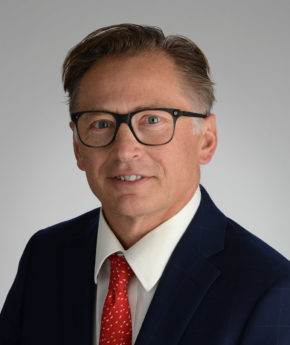 Tracy Rasmussen, The University of Kansas Health System
Tracy Rasmussen, The University of Kansas Health System
The perspective Tracy Rasmussen brings to healthcare administration might not be unique, but it’s safe to say his vantage point isn’t overcrowded with peers. A registered nurse at the start of his career, he pivoted into administration after securing a business degree, then an MBA. In a discipline where standards of care are always running up against business imperatives, Rasmussen has truly found his niche as senior administrator of cardiovascular services for The University of Kansas Health System. “Working in health-care administration was not a deliberate choice until I developed working relationships with the cardiologists” in the practice, Rasmussen says, and through them, he was inspired to make the move. That led to being chief executive of Mid-America Cardiology at Saint Luke’s, then a negotiating role as the practice was folded into TUKHS in 2001. Since then, the program has nearly tripled in size, and he helped implement the first electronic medical records, digital echocardiography, and hospital-employment of physician groups, among other achievements. Having both a clinical background and a business background has paid off in multiple ways for this native of southwestern Iowa. “The experiences early in my nursing career at the bedside helped shape my success as an administrator,” Rasmussen says. “I still maintain my registered nursing license and have always thought of myself as both a clinician and an administrator.” Across the breadth of 34 years in health care, he cites two achievements that stand out: The first was his role in transitioning the cardiology practice to its new organizational home; the other was in creating a compensation plan that takes into consideration the many unique aspects of cardiology medicine, “as well as the personalities, interests and work style of each physician, that allows them to attain a high degree of personal achievement combined with professional job satisfaction,” Rasmussen says.
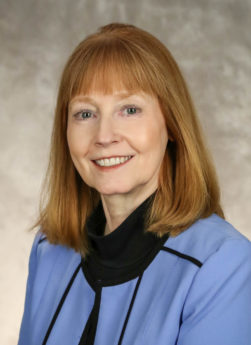 Kerri Jenkins, North Kansas City Hospital
Kerri Jenkins, North Kansas City Hospital
For most of us, workplaces are professional concerns. Kerri Jenkins’ appreciation for hers—North Kansas City Hospital—is deeply infused with personal feelings. She was born there, in fact, and the staff there provided what she calls “amazing care” for her father during a critical illness after another hospital had deemed his case hopeless. “From that experience alone, I owe a personal debt to North Kansas City Hospital that I can never fully repay,” Jenkins says. “I feel so fortunate to be able to give back to the organization that has done so much for me and my family.” This Northland native does that as chief operating officer, a role that extends system-wide the brand of care she once practiced as a nurse. Long before that, though, the hospital and its mission resonated with her family. “Growing up, I remember hearing how my mother participated in bake sales and chili suppers to raise money for the initial funding of North Kansas City Hospital,” Jenkins says. In her youth, she was influenced by TV programs with medical settings; her grade-school lunchbox was adorned with figures from the nurse-themed “Julia.” “I cared for my family at a young age, not because I had to, but because I wanted to,” Jenkins says. “After many years of experiences in various hospitals with family members, I knew nursing was the career for me. The knowledge, skill, professionalism, and compassion I witnessed from nursing professionals helped me know what I wanted to do to make a difference in people’s lives.” That track took an unconventional turn while working as a nurse in a small community hospital. Turnover quickly elevated her to senior-nurse status, and she was asked to serve as interim director of nursing. She was good at it, too: The following year, she was Chief Nursing Officer of the Year for that health system. That set her on a path through leadership roles as a chief nursing officer, system nursing executive, and COO at different non-profit and for-profit organizations.
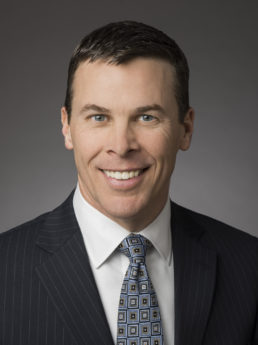 Greg Sweat, Blue Cross and Blue Shield of Kansas City
Greg Sweat, Blue Cross and Blue Shield of Kansas City
He has a business degree, a medical degree and a master’s in health-care administration. Those combine to give Greg Sweat the vision to tackle two of the biggest problems in health care: “How do we improve access to health care and how do we make it more affordable?” These are reasons why this Northland native transitioned from the hands-on side as a primary-care physician into his current role as chief medical officer for Blue KC. He’s been the chief architect of the Spira Care strategy, reimagining delivery of health-care services that take a whole-person approach to wellness. That assignment landed on his desk not long after he joined Blue KC five years ago. “It was one of the first things Erin (Blue KC CEO Erin Stucky) gave me,” says Sweat, who spent seven years on staff at the Mayo Clinic before coming home to Kansas City in 2003. “It was the best thing that ever happened to me at Blue KC. It gave me a chance to see every aspect of health care from the insurance and payer side.” Four years after its launch, the metrics argue strenuously that the model works: patient satisfaction scores are through the roof, as are provider satisfaction scores within the framework of the Spira Care concept. The latter is no small achievement, given the burnout rate among the nation’s physicians. There is more to be done. As for costs? Down 10 percent over standard models. “People sometimes ask, ‘don’t you miss working with patients?’” he says. “There are certain aspects that I do miss—the relationships you form are so important and meaningful, but you quickly realize so much occurs outside the exam room—lifestyles, behaviors—this is just an opportunity to do more for more people.” That’s a fulfillment of why he went into medicine in the first place: to serve in the broadest capacity possible. His work places him at the vanguard of sweeping change in health care. “Now, we have providers doing more on the insurance side, and insurers more on provider side. We see it on national and local levels, but the difference in Kansas City is, we recognize each others’ importance in forming partnerships that are critical.”
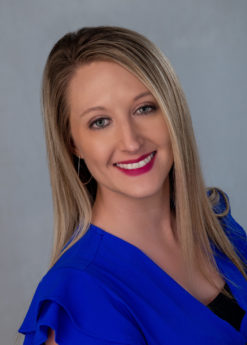 Mindy Markt, Mosaic Life Care
Mindy Markt, Mosaic Life Care
Once upon a time, Mindy Markt wore a neighbor’s nurse-tech medical scrubs to her school’s career day. “I remember it vividly; that’s what I wanted to do,” she says. Down the nursing path she went, securing her nursing assistant’s license and working in a hospital setting at age 20. After earning her degree in biology from Missouri Western, she returned to clinical work and found … something missing. That experience, she says, “was what made me decide not to go to nursing school. I like the process-improvement side of things. That’s where I fell in love. I liked helping the patient, but I really like helping the caregivers help the patient.” She took a bit of a circuitous route on the way to becoming director of environmental services at Mosaic Medical Center-St. Joseph. In nearly eight years of clinical experience and three more on the technology side, she has worked with electronic health records, surgical services and other operational tasks. A medical director who saw potential in her encouraged Markt to get her MBA, which she did, working full time with two kids at home. “Some days, I don’t know how I survived,” she says, “but I did.” For the past four years, she has brought stability and commitment to a team responsible for maintaining a safe environment for a hospital that admits nearly 17,000 patients a year. Some would ask Markt why she would trade working with physicians for working with housekeepers: “Aren’t you going backward?” “I didn’t see it that way at all,” says Markt. “This is a group that had not had a leader in several months, not had a leader stick with it for more than a year for multiple years. They really hadn’t had leadership in a long time, and they were struggling.” Sensing an opportunity to make a difference, she stepped in, and in establishing a modern-era standard for longevity in the role, Markt says, “it’s been the most rewarding position I’ve ever had—much more than just running a department. It’s a group of people who need more support than just coming to work to do a job for a paycheck.”
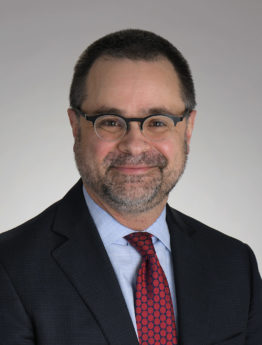 Jeff Novorr, The University of Kansas Health System
Jeff Novorr, The University of Kansas Health System
Jeff Novorr developed his appreciation for top-notch health care services the hard way: As a patient.“ After spending time in Japan as a high school exchange student, I went to college intent on studying international business,” says the vice president for support operations at The University of Kansas Health System and hospital. “Early in my junior year of college, I had some serious health issues that ended up putting my studies on hold for nearly two years. I spent a fair amount of time in and out of various hospitals and doctors’ offices.” He was exposed first-hand to a healthcare system that, on the one hand, was clinically excellent but, on the other hand, had opportunities to improve the patient experience. It led to a reassessment of life’s possibilities once he had earned a bachelor’s in political science; next would be a master’s degree in healthcare administration at Washington University in St. Louis. Conversations with family and friends in the health-care sphere, he said, raise intriguing possibilities for a non-clinician to provide meaningful support to support the clinical enterprise. At the health system, the team he leads in hospitality services comprises a little more than 5 percent of a workforce, more than 13,000-strong, yet the services they provide 24x7x365 quite literally impact every square foot of space they occupy and every service they provide, Novorr says. “Our doctors and nurses are superstars and rightfully deserve much recognition for the work they do,” he says, “but without human resources to hire them, and supply chain to order their supplies, and finance to pay the bills, and the plumbers and electricians and painters to maintain the infrastructure—you get the picture. Health care is a team sport, and no one can be successful on their own.” At a hospital with more than 45,000 annual patient admissions, the team touches a lot of lives. That, he said, leads to professional satisfaction flowing from various sources.
 Niki Lee Donawa, University Health
Niki Lee Donawa, University Health
The first moves most hospital executives made at the onset of the global pandemic in 2020 centered on communication—between leadership and staff, between department heads, between front-line workers and support staff. Another vital communications link: the community served. That’s where Niki Lee Donawa would be tested as University Health’s chief community relations officer. “When the pandemic hit, everyone was being directed to various Web sites that were only in English and used unfamiliar terminology,” Donawa recalls. “Being in the community, we knew that not everyone had access to computers, and not everyone—especially our seniors—is computer-literate.” On top of that, not everyone is a native English speaker, she notes. The hospital’s response include setting up a phone number—816-404-CARE—to help people learn how to navigate the health system, obtain testing, then get vaccinated. The goal was to reach the most vulnerable people who were disproportionately affected by the virus. A native of Higginsville, Donawa says “health care actually found me,” after a long stint at Hallmark, where she was director of sales training. She says she learned first-hand about “caring to send the very best” from Don Hall Sr. himself, who would attend her sessions: “He always yielded to me for instruction during every class presentation as if I were in charge. How cool was that!” At University Health, her work with the community helps overcome a troubled history of trust issues that health-care systems have had with minority communities. Early in the pandemic, “many individuals who were not willing to come to the hospital were at least willing to come to a trusted place in the community, so we took the care to them,” she says. “These partnerships are invaluable and literally saved thousands of lives at the onset of the pandemic.”
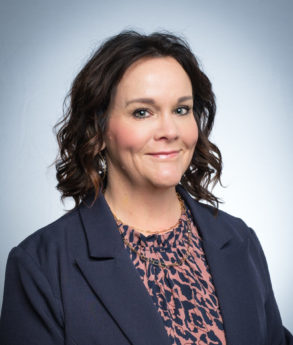 Dana Dobbie-Blindt, Stormont Vail Health
Dana Dobbie-Blindt, Stormont Vail Health
Medical care has been evolving for thousands of years. But, over the past two of those years, Dana Dobbie-Blindt has been part of a growth arc steeper than any since the Spanish Flu epidemic a century ago. A nurse by training, she’s now the director of the care transformation at Stormont Vail Health in Topeka, which operates one of the region’s biggest medical centers. Her life changed in a big way, as did the very concept of care, with the arrival of the global pandemic in early 2020. “COVID prompted many healthcare facilities to examine and shift their care strategies to a more proactive and anticipatory approach; SVH was no different,” Blindt says. “We quickly engaged a forward-thinking, multidisciplinary team of physicians, executive leaders, operational directors, and IT professionals to improve in-patient flow with current staffing, all while continuing with positive patient outcomes and experiences.” It was an important collaboration, she says, because a cross-sectional team brought both acute- and ambulatory-care perspectives to the table to design and implement a new model of care—Enhanced Primary Care. Her department consists of ambulatory RN care managers and social workers, who played a vital role in getting EPC up and running, and in its continuing success, Blindt says. “I take great pride in what our team has accomplished: To date, we have enrolled more than 3,300 patients in the COVID Enhanced Primary Care program, in which the care managers have done amazing work collaborating with providers and coordinating the care of these patients.” from nursing school.” Since then, her nursing roles have taken her to labor and delivery and care-management settings. Seeing that daily impact on patients, she says, is constant reassurance that she’s right where she needs to be.
 Paula Blizzard, Children’s Mercy Kansas City
Paula Blizzard, Children’s Mercy Kansas City
The standing joke in her family, says Paula Blizzard, is that she still doesn’t know what she wants to be when she grows up. Trust us, though: Blizzard is exactly what she wants to be. She’s the senior director for nursing excellence at Children’s Mercy, the region’s premier pediatric hospital. In that role, she’s also responsible for a prized industry recognition: The American Nurse Credential Center’s Magnet designation. We were the first in Kansas City to be recognized as Magnet; when I started this journey, it wasn’t that prominent in the region,” Blizzard says. “I think people don’t recognize that we spend a lot of time collaborating with other Magnet programs—KU, Saint Luke’s, North Kansas City—to share best practices. I would love for every hospital to be Magnet, because that means patients are getting the best care possible.” Patients and their families may not understand the meaning of that status, she says, “but I think if they’ve experienced Magnet and non-Magnet care, they can feel that difference.” Hailing from the southeast Kansas burg of Toronto, where she was raised on a cattle ranch and farm, she grew up with the standard-issue appreciation for hard work. She wanted to combine that with something more altruistic. “I knew I wanted to do something to help people,” Blizzard says, but “I took a round-about path to nursing, for sure.” From pre-pharmacy in college, she tested multiple majors before settling on nursing. After earning her biology degree at K-State, she headed to Topeka’s Washburn University for a nursing degree. The appeal of nursing, she says, stemmed from “just that connection with being able to be at bedside helping people and seeing them through some of the most difficult things in life, getting on the other side of it.”
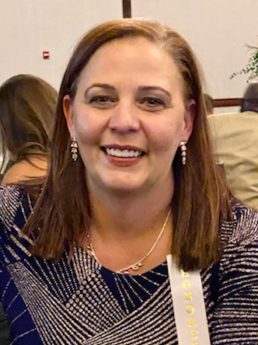 Angela Haley, AdventHealth / Saint Mary’s Medical Center
Angela Haley, AdventHealth / Saint Mary’s Medical Center
When AdventHealth Shawnee Mission was looking for an experienced cardiovascular-services manager for its new hospital in south Overland Park last fall, Angela Haley saw a fertile field ahead. “I’m very much about growing things, growing people and growing service lines,” says Haley, who had been running a similar operation at Saint Mary’s Medical Center in Blue Springs. “I felt like it was the right move for me.” Haley had been a rock star of logistics while at Saint Mary’s, though that wasn’t part of her job description. When the pandemic hit in 2020, the lab was temporarily shut down while the hospital swiftly moved to limit risk of viral transmission. Thrust into an all-hands-on-deck urgency because of climbing patient counts and shortages of staff members falling ill, the hospital turned to Haley to oversee the vital procurement of personal-protective equipment for the staff. “We were continuing to take care of cardiac patients, but I wanted to be able to help those front-line workers, because cardiac didn’t see a whole lot of that,” she says. “I wanted to have a contribution of some sort, and this was a need to fill. In the cath lab and interventional radiology, a lot of that work is inventory. You learn inventory management real quick to have supplies physicians need for procedures, so the job was a perfect fit if you understand how to do inventory, talk to reps, know whether prices were right and how to get ahead of it vs. behind it.” She logged many a seven-day work week doing it. The impact of that strain, however, is still with her. “I tell people I must have PSTD in the emergency department. Until you live that moment, there is such chaos that you don’t know where to begin, you just have to dig in and be helping hands wherever you can. A very overwhelming feeling. I still get very emotional about it. The whole pandemic makes you realize taking care of a patient is so much more than just being a body taking care of someone. The fact that people couldn’t see their families, that you’re holding hands for people who probably aren’t coming off that ventilator—it was very sad and humbling that you got to be with them when their own family couldn’t.”
 Susie Krug, Saint Luke’s East Hospital
Susie Krug, Saint Luke’s East Hospital
In nursing, a key to providing superior patient care—just one of many—is understanding the role of diagnosis. While no two cancer patients might require identical approaches, it’s much clearer that a cancer patient and a stroke survivor start with different care needs. That’s the way Susie Krug approaches her work, directing nurses at Saint Luke’s East as chief nursing officer. “There’s a saying that care for the patient is individualized,” Krug says. “I’ve tried to really cater to that—you have to determine what is that value to them. So you learn about them and can address them accordingly.” Finding that specific point of connection, she says, is an important first step in establishing a successful nurse-patient relationship. “Some diseases, organically, are really challenging,” Krug says. “But everybody eats; you can always connect with someone about food. If you’re waiting on stitches, just ask, ‘what’s for dinner at your house tonight?’ If you connect with them, their experience is more enjoyable and can make a complex situation simple.” The job may be complex, she says, but if you break it down and start with simple goals, you can get to a good plan, and simple additions can make it a perfect plan. “That’s what leadership is to me for the patient population,” Krug says. “We’ve had to do so much of that the past two years as we outlined a new disease, something that had never happened in many careers, then break down how to care for those patients.” A Kansas City native, Krug might have picked up a few things about standards of care as one of 16—yes, 16—kids who mainly gravitated toward health care work: three nurses, a physical therapist, a physician, and dental hygienist among them. She cast her career lot with Saint Luke’s in part because of the culture and in part for what a nursing role there allowed her to do with life outside the hospital. The rewards have come from each direction. “I’ve had so many of those moments that have validated my career choice, but it always starts with the patient impact,” Krug says. “When I was young, nursing provided such a flexible work career. It allowed me to raise my girls and still do what I wanted to do in nursing.”
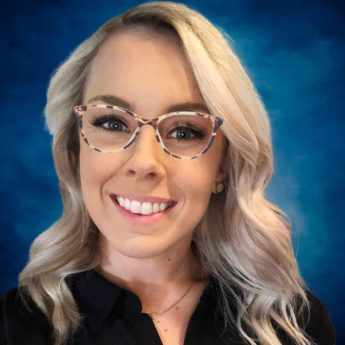 Rachel Melson, Swope Health
Rachel Melson, Swope Health
Call it the Melson Mission Statement: “In nursing, you learn to treat others with compassion and as an equal. And you approach every interaction with a patient in your care with your whole heart, every time.” So says nurse practitioner Rachel Melson of Swope Health. She’s a native of Raytown who flirted with the idea of a law degree—right up to her first day at Rockhurst University. “I started wondering about a career that would allow me to help others in a more hands-on way,” she says. “The day of registration, I surprised my parents with a change to nursing. It was the best decision I have ever made.” She worked for years in the ICU ward at Research Medical Center, but when her final clinical rotation for nurse practitioner took her to Swope Health, “I finally saw where I was called to be,” she says. “My critical-thinking skills that I developed from years in the ICU armed me with the tools to help an underserved community in ways I didn’t know were possible.” Medicine, Melson says, can be very algorithmic: You have X disease, you get X workup, and then you get X medicine/treatment/education. “But there is not a perfect algorithm for a person who is living in a tent, has several significant medical conditions, no access to clean water, and no way to store their medicine,” she says. “You have to think outside the box, know your community and its resources, and want to go the extra mile for your patients.” The real appeal of nursing, she says, wasn’t apparent until she was already in nursing school. “Being a nurse is about truly wanting to care for others without any bias for their circumstance and a desire to help from a position of a peer, rather than the perceived superordinate position of other professions,” she says. A self-described lifelong learner, she pursued the highest degree possible to achieve the most significant impact: “Every day I am given the opportunity to make meaningful changes to the health of others in the exam room, in the community, and even in the classroom.”
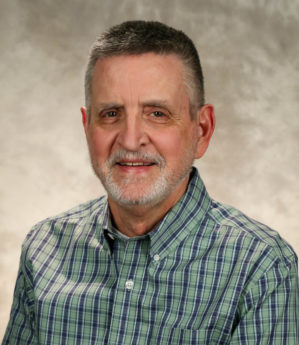 David Meyer, North Kansas City Hospital
David Meyer, North Kansas City Hospital
When you hear references to “front-line workers” in health care being “in the trenches” in the fight against COVID-19, the military references are not misplaced. Especially in critical-care units like the one David Meyer directs at North Kansas City Hospital. “COVID has changed virtually every aspect of critical-care nursing,” Meyer says. He ticks off the ways: COVID patient volumes that displaced others from ICU, time and energy to don and remove personal protective equipment, restrictions on visitation, and dealing with anguished family members, among others. Throughout it all, he says, the staff “responded to the lack of visitors by ensuring they were always there for every patient, throughout their stay and most importantly, at end of life, to ensure no one was ever alone. It was an emotional roller coaster that only those who have worked with the critical-care COVID patient can truly understand.” His role is to help manage the stress and demands of the pandemic on his staff, but he’s seen the effect: “It has also created a stronger bond among the ICU teams,” Meyer says. “It is their dedication, devotion and resolve in caring for our patients that I always remember. It is also the primary motivator that keeps me in my role as a critical-care director.” His work answers a call to serve that he first heard back in high school in western Kansas, with an assist from his mother. She was a nurse’s aide who nudged him to get job as a hospital orderly. That sealed the deal on nursing. He applied for the LPN program, then served four years as a medical corpsman in the Air Force, where he developed “an overwhelming love for critical-care nursing and the role of the RN,” he says. “The experiences I had created a desire to always want to know more, to never be satisfied with suboptimal care and to never let anything stand in the way of my continued career in critical care.”
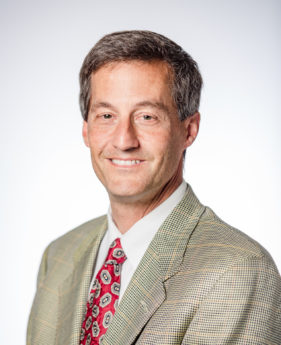 Max Glaser, Research Medical Center
Max Glaser, Research Medical Center
Diabetes cases are one of the fastest-growing categories of medical maladies in the U.S., and for a good reason—the disease is highly correlated with obesity, which has reached epidemic proportions in this country. As a result, more than 1.4 million diabetes cases are diagnosed each year. That’s the scale of the challenge that faces nephrologists everywhere, including Research Medical Center’s Max Glaser. A board certified, practicing nephrologist since 1995, he came aboard as a practice partner with Midwest Nephrology Consultants a year later. He serves as the practice’s primary interventionalist, which means the lion’s share of his professional time goes toward interventional procedure work, and he does a lot of it: More than 500 procedures annually, including cases of kidney failure, kidney stones and chronic kidney disease. Glaser completed additional training in 2002 to begin performing those interventional nephrology procedures, caring for the practices’ dialysis patients’ interventional access needs. In addition to those duties, Glaser serves as medical director for HCA Midwest’s largest dialysis unit, KCDT. He’s known as a committed and caring nephrologist with a “one-on-one” style, interacting and really listening to his patients’ concerns, with their comfort and welfare as his top priority. He graduated from the six-year medical program at the University of Missouri-Kansas City in 1989, then did his residency at the biggest hospital in Missouri, Barnes Jewish Hospital in St. Louis. Working at a practice group that is part of HCA Midwest Health provides considerable financial backing for the practice—the company’s Kansas City area hospitals alone account for well over $9 billion in annual revenues.
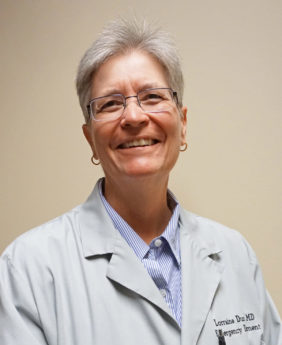 Lorraine Duncan, Centerpoint Medical Center
Lorraine Duncan, Centerpoint Medical Center
An emergency-room physician sees the aftermath of a great deal of carnage, and Lorraine Duncan has certainly seen her share in that capacity. But before she was a doctor, she saw the point of origin for much of that carnage, serving as a paramedic with the Chicago Fire Department. Since 2007, she’s been with Centerpoint where she rose to chief of staff before a much larger calamity befell the nation when the global pandemic first started in 2020. A hallmark of her approach to treatment during a time of unparalleled distress for patients is assuring them that they’re in good hands. “I explain that I have two buckets: In the first bucket, I have many things that are going to be helpful, that will ease pain and impart dignity,” she says. “In the other bucket are things that I’m not willing to offer, because for sure they won’t help and may be harmful.” Her boss, CEO Bret Kolman, said Duncan would wade into battle in the hospital’s Level II trauma center every day, without hesitation, as the pandemic unfolded. Her straight-forward approach to care is reflected in her non-clinical work at Centerpoint, where she served on the ethics committee for a decade, then became its chair. That type of service earned her the Champions award from the Center for Practical Bioethics in 2020. Duncan also has served on Centerpoint’s board of trustees and medical executive committee, chairing that panel for two years. As an ER physician, she’s routinely been the first physician to see critical cases of COVID-19 that come in the doors. She earned her medical degree in 1999 from Rush University’s medical school in Chicago, then completed her residency at the University of Illinois’ Chicago College of Medicine.
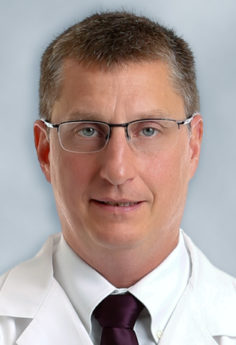 Patrick Perkins, Liberty Hospital
Patrick Perkins, Liberty Hospital
The sobering reality of life-and-death decisions was never more apparent to Patrick Perkins than it was while he was on call that long-ago one New Year’s Day. A patient—he wasn’t a young man—arrived at the hospital with multiple organ failure. “At one point, everyone gave up hope that he would get better,” Perkins remembers. “We talked with consultants and family about stopping, but I said, ‘why don’t we take one more run at this? I don’t know that he’s done yet.’” And he wasn’t: The man recovered, and had another year and a half of quality life. “You’re always shooting for that,” Perkins says, and that day “the right people were there at the right time when the chips were down. This is why I’m here.” A pulmonologist now with Liberty Hospital, Perkins is a Prairie Village native who finished medical school and made stops in St. Louis, San Antonio and Tulsa before coming back home. After a decade at St. Joseph Medical Center, he aligned with Liberty Hospital in 2018 and found the fit more comfortable—“like a family,” he says—somewhere between community hospitals and research-level medical centers in scope. “Smaller just seemed to be a better fit,” he said. “Some organizations get so large, it creates a whole set of problems.” Looking back, he says, a series of random encounters placed him on his path. Some go back to mentoring figures at Rockhurst University, some were in the medical field, and all, he says, “seemed to point me in the direction where I like what I’m doing.” Pulmonary medicine gives him a chance to establish long-term relationships with patients, unlike one-and-done surgeon-patient encounters, he said. “In the ICU, you see every disease manifestation; you learn more about a lot of things and how to manage things. And you have to have the attitude that the buck stops here—if I don’t take care of this, no one else will.” The past two years have been tough on ICU wards everywhere, but they have been instructive for him: “It’s another wake-up call about your mortality—you’d better enjoy life while you’re here, because you never know when you’re going to be next. This is another reminder that I need to be more involved with family and the more important things in life.”
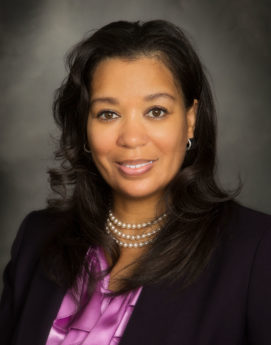 Tonia Wright, Grace Advertising
Tonia Wright, Grace Advertising
Some companies rightfully take pride in their philanthropic contributions, donating 10 percent of profits, sometimes more, to favored causes. They are inspirational in that, but they have a long way to go to catch Tonia Wright and her MBE/WBE ad agency: “Grace Advertising donates nearly 50 percent of what we do,” Wright says. “When it comes to health-care advocacy and marketing, we don’t believe in transactional relationships—in other words, you pay us X and we give you X in return.” There is always more to do, she says, and more to say, more to write, and more to create to ensure clients’ audience members have what they need to access a service, learn about a disease they are battling, how to navigate COVID—including how to parse facts from misinformation. The firm’s work also covers therapies to combat HIV/AIDS—“especially in rural communities, where awareness is extremely low,” Wright says. It also provides guidance on Medicaid expansion and where to enroll, promotes normalization of mental-health care, and more. Though she operates out of small-town Lexington, in Lafayette County, Wright retains the values she grew up with in the urban core of Kansas City, just east of Brookside. At Morgan State University in Baltimore, she studied communications with an emphasis in journalism. That gave her the voice to promote causes she holds dearest. And her volunteer stripe isn’t limited to what the agency can do; she’s also on the board of the Health Forward Foundation, and launched accessHealth News, a newspaper offering comprehensive information about preventable health-care issues and chronic disease. “Clients, even those that are endowed, have a finite budget for marketing in most cases,” Wright says. “We come in and fill in the gaps—paid or not. It simply needs to be done. We also do this work through an equity lens. By God’s grace, we do this work without undercutting quality to provide non-commissioned work.”
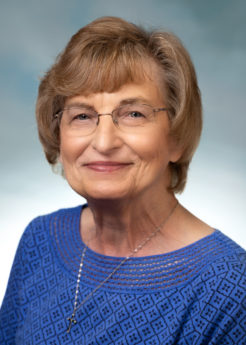 Jean Withrow, Olathe Health
Jean Withrow, Olathe Health
The smiling face you see here is the same one you might catch greeting guests at Olathe Medical Center, and it belongs to Jean Withrow. To know Jean is to know two things in particular that make her stand out: One is the 19-year track record she has established as a volunteer at the hospital, a span over which she has logged more than 8,000 hours. The other? Despite being in an age group most at risk from the deadly virus sweeping the planet, Withrow stood her post, volunteering throughout the entire pandemic. She says she simply couldn’t imagine not supporting patients and visitors during such a challenging time—even when many people far younger were avoiding hospitals because of their fear of contagion. Her smile and her service were good enough to win her distinction as Olathe Health’s 2021 Ambassador of the Year. She was inspired to sign on by the example of a longtime volunteer Hazel Hendrix, and “after coming on board in 2003, the rest is history—it’s been one of the best things I’ve ever done,” Withrow says. She’s a native of Eudora who moved back to Olathe after spending time on each coast during her working years, in the insurance department at General Motors and then managing the books for her family’s construction business. Her first five years of service marked volunteer time in the Emergency Room and in patient registration before moving to the front desk in 2008. “I knew I liked helping people when I worked as a nurse’s aide at a small hospital in Gardner during high school, so it has been nice to give back again,” Withrow says. “Whether I am helping route guests to the right place and delivering flowers or I am kidding around with visitors to bring a smile to their faces, my work here is always rewarding.” She may be a part-time volunteer, but she’s a full-time advocate for the hospital’s volunteer mission. “I try to recruit people everywhere I go!” she says. “If you like helping people, the hospital is a great place to be.”
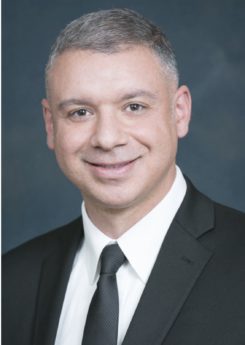 Wael Mourad, Medina Clinic
Wael Mourad, Medina Clinic
Even for someone who has been through medical school and obstetrics training, it was a horrifying sight for Wael Mourad: The heavily pregnant woman arrived at Truman-Lakewood hospital with a torn uterus. “It was a catastrophic event. It was clear the baby was crashing,” Mourad recalls. “His heart tones plummeted; he was not going to make it.” Just eight minutes after she arrived, he had completed a C-section and delivered the baby. Then he set about mending the rupture. “To save a mom and her baby is the most incredible feeling ever,” Mourad says. “Even if I do nothing else in life, but was part of this, that’s enough for me.” Oh, but there’s so much more that he’s doing. In addition to the weekly routine at his own private practice, Health Partnership Clinic, he donates weekend time to the Medina Clinic, which he founded in 2010 to provide low-cost care to the under- and uninsured. The motivation for it, he says, came while he was still in his medical training. “It’s why I got into medicine: I wanted to make a difference for people.” Mourad was born in Egypt, but came to the U.S. at just six months old while his father attended graduate school. On a trip back to his homeland, he grew quite ill, and was treated by an uncle who was a physician. It made a lasting impact. He chose family medicine because of the variety of patient experiences, leaving behind internal medicine. An aspect he really loved was the obstetric part. Having delivered roughly 1,200 babies, he still marvels at that process and recalls his youth, when his mother was carrying one of his sisters. “Whenever I see a pregnant patient, I still see a little bit of my mom in those patients,” he says. During an obstetrics fellowship in Chicago, he met the woman he would marry, and they decided to return to her hometown of Kansas City. Since then, he has worked at Truman-Lakewood, started his own practice, and sees patients—90 percent of them uninsured—at the Medina Clinic. Oh—about that boy whose life he’d saved years ago? He’ll turn 13 this year. And—what are the chances?—one of nurses on Mourad’s staff turns out to be the young man’s grandmother. “She shows me pictures all the time,” he says. “He’s a handsome young man. To be able to make that kind of a difference in somebody’s life is amazing.”
 Gary Salzman, University Health
Gary Salzman, University Health
In 37 years as a pulmonologist and critical-care physician, Gary Salzman has had plenty of opportunities to witness patient outcomes that validated his choice to become a doctor. He’s also seen cases that don’t go well. There, too, validation can be found. “I had a husband and wife both die of COVID in the ICU,” Salzman says. “Their daughter expressed her gratitude to our team for our compassionate care of her parents. … I teach our trainees to connect with patients and family members in meaningful ways. The outcome is often out of our hands. The daughter’s gratitude reinforces ‘this is why I do what I do.’ ” A St. Louis native, he came to Kansas City in 1974 because UMKC’s medical school offered a six-year degree program. Following his residency in North Carolina and fellowship at UMKC, he signed on with Truman Medical Center, now University Health-Truman, in 1984 and has been a fixture there, providing patient care, teaching, and doing research. “Identifying the correct diagnosis and implementing a treatment plan to restore health to people that were suffering is exciting and rewarding for me,” he says. “I decided to specialize in pulmonary and critical-care medicine because of the broad range of clinical problems and multiple options for treatment.” The most rewarding part of his job? “Connecting with patients and family members to explain medical problems in terms that can be understood, and to help facilitate end-of-life decisions,” he says. “I enjoy practicing in multiple settings, including the ICU, hospital inpatient units, and clinics.” The pandemic has stressed the entire nation’s health-care system, but for providers dealing with a respiratory virus, the challenge was particularly intense. “We had large numbers of very sick patients with COVID who required extensive deployment of personnel, equipment, medications and, most important, emotional support,” he says. “Our team was fatigued at times but we all supported each other to not only get through this challenge, we exceeded all expectations at providing compassionate comprehensive care for a disease we had little knowledge and experience in managing.”
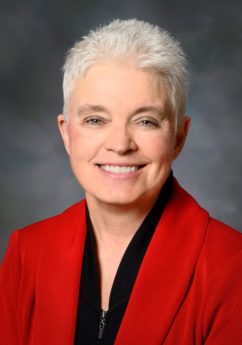 Melinda Estes, Saint Luke’s Health System
Melinda Estes, Saint Luke’s Health System
Melinda Estes may hail from Kansas City, but her impact in health care reverberates from coast to coast. In January 2020—a time of considerable significance to many providers—the American Hospital Association introduced the Saint Luke’s CEO as chair of its board of Trustees. That made her the top elected official for a group with more than 5,000 member hospitals and health systems in the U.S. She’d previously served on the board and its executive committee, and was ranked No. 13 on Modern Healthcare’s prestigious list of 100 Most Influential People in Healthcare, as well as among the 50 Most Influential Clinical Executives. Amid all the national recognition, it should be lost on no one that Estes oversees the fourth-largest enterprise in the Kansas City region, a health system with 11,000 employees and nearly $8 billion in annual revenue. To those executive duties, she brings the perspective of a hands-on provider—Estes is also a board-certified neurologist and neuropathologist. She came to Saint Luke’s in 2011, and leads a not-for-profit health system with six hospitals and campuses, nationally recognized programs in cardiovascular medicine, neuroscience, and cancer treatment and research, home care and hospice services, behavioral-health services, and more than 100 physician practices and clinics. At one point in life, she envisioned becoming a concert-level bassoonist, but opted for medicine. “What makes a good physician, as well as a good leader, is good listening,” she once told Becker’s Hospital Review. “Listening to what patients are telling you or rhythms of an organization and what employees are telling you— those are two sides of the same skill.” Superior treatment, she said, comes from “listening, figuring out the problem, getting data and making a plan to move forward.”
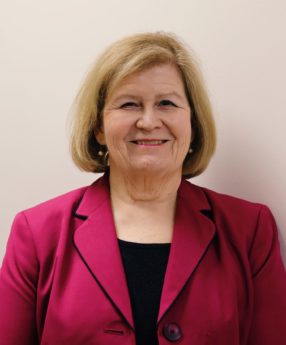 Patricia Neubauer, KC Care Health Center
Patricia Neubauer, KC Care Health Center
How influential was Patricia Neubauer’s mother? Well, the chief clinical officer for KC Care Health Center says her mom was a nurse back in Bartlesville, Okla., raising her kids with a gospel of service. “Of the four daughters, three are nurses, and one is a social worker,” Neubauer says. “The message really took.” It took early, in her case: “It was a common thing back then to be a candy-striper, and I started that in about sixth grade—I don’t even recall exactly. I would go to the hospital with mom, and I just felt like it as the place where I was supposed to be.” By the time she was 15, she had a job as a nurse’s aide, and held that through high school. Nursing school was almost a given, and she came to Kansas City for that at Saint Luke’s College of Nursing, then worked for the hospital, eventually managing the ICU. “Though I really loved that setting, I decided I wanted something more. Saint Luke’s was so good to me; I worked the weekends, three 12-hour shifts through school to get my doctorate in psychology, and to go into health psychology.” There followed a succession of jobs, in the for-profit and non-profit worlds, where she could apply the breadth of her health-care training in multiple disciplines. She was managing the clinical department at Sun Life when it was acquired in 2017, and had the opportunity to assess a new track. “I found out about the opportunity at KC Care and came on board,” she says. “It really is about making a difference in this world for me.” For her patients, as well, who receive care from someone who understands both the physical and mental aspects of health. “Patients we see sometimes come with complicated challenges—not just health, but mental health challenges, the psycho-social issues. One of the things we’re really focused on now are those social determinants of health, looking at the whole person: How can you care about getting your medications for high blood pressure when can’t even get food?”